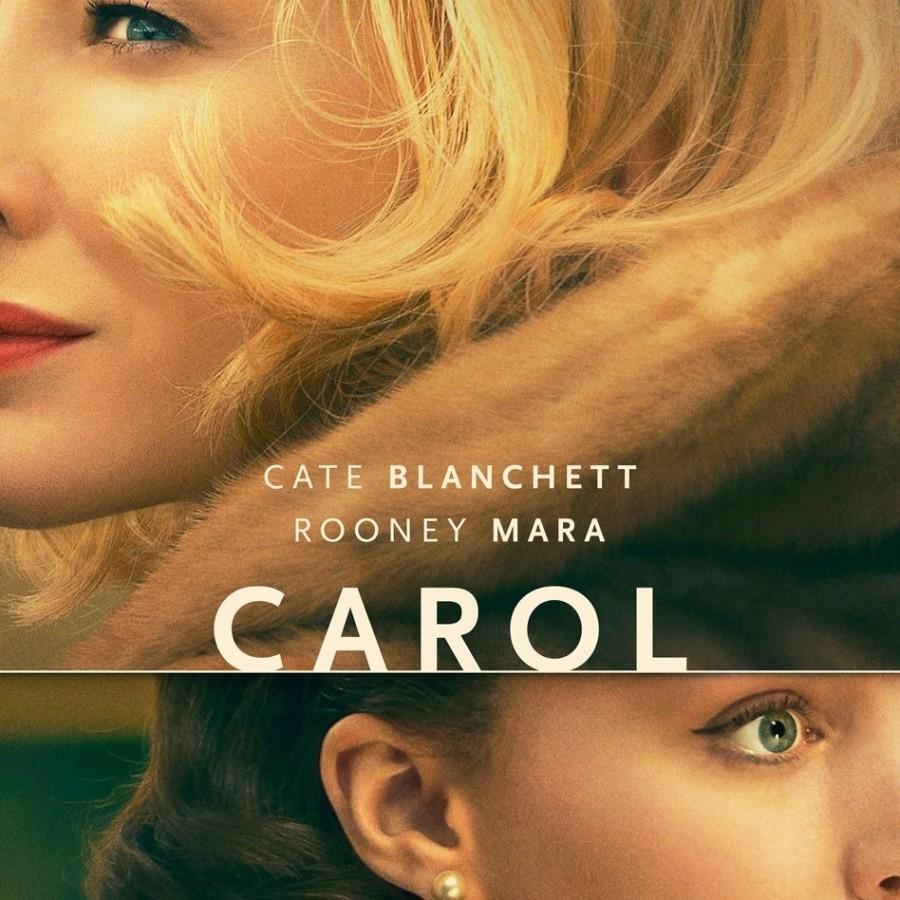‘Carol’ powerfully depicts lesbian couple in the ’50s
Starring Cate Blanchett and Rooney Mara, Todd Haynes new film, “Carol”, explores a lesbian relationship in 1952 New York City.
November 30, 2015
“Carol” is a unique film due to its portraying a lesbian relationship in the early 1950s, but director Todd Haynes knew from the start that he didn’t want to let this factor override the entire film.
“The one thing I really wasn’t interested in doing was a ‘see how far we’ve come’ or ‘how much better things are today’ movie,” he said.
Haynes screened his new film “Carol” last week at Lincoln Center in conjunction with a Q&A, in which he discussed his filmmaking process and the film’s many influences.
“Carol” is a love story in its purest form—simple and quiet, yet immensely moving. Based on Patricia Highsmith’s 1952 novel “The Price of Salt,” the movie follows the romance between Therese Bellivet (Rooney Mara), a young salesgirl and aspiring photographer and Carol Aird (Cate Blanchette), a mother and housewife in the midst of a divorce.
With phenomenal performances by Blanchett and Mara, this film masters the art of storytelling through facial expressions and gestures rather than straight-out discourse.
“All those silences and the lack of dialogue show how much trust is given to the viewers and to invite interpretation,” Haynes said. “If there was any more it would be indicating too much, telling too much. If there was any less, it would be vacant or uninteresting.”
While Mara is extraordinary in her role as Therese, who ultimately serves as the narrator, Blanchett steals the show with her magnificent underplaying and ability to display a mysteriously attractive magnetism with just the snap of her fingers.
“The amazing thing about this performance is that Cate is aware of her proximity to the viewer so acutely and basically has to depict the image of Carol through the eyes of Therese,” Haynes said. “She is playing the object of desire throughout the film and she knew how to hold back and conduct that trance.”
This film marks the fourth team-up between Haynes and cinematographer Edward Lachman. The overall look of the film consists of colors that are both vibrant and softened, which was inspired by the “beautifully muted, sort of soiled color palette” of 1950’s still photography.
Additionally, there is a lot of filming through windows or other clear surfaces. Haynes explained that he and Lachman took advantage of “filtering” various shots in the movie, an idea that was inspired by the work of 1950s photographer Saul Leiter who frequently took photographs through windows, drooping awnings, precipitation or dusty glass.
“Filtering creates barriers between us and the objects that we’re looking at, and just reveals the predicament of looking,” Haynes said. “When there’s something in the way, you want to get around it and you’re aware that you are looking. When there’s nothing in the way, you don’t even have to think about looking as a predicament.”
The movie also shows off stunning costume designs by Sandy Powell, a brilliant score composed by Carter Burwell and a soundtrack that is just pure magic. All of this adds up to create the heartrending masterpiece that is “Carol,” which moves full circle to tell a visually stunning, strikingly poignant story of a ruptured and suppressed romance.
“Carol” is currently playing in select theaters.
A version of this article appeared in the Nov. 30 print edition. Email Sherrilyn Ling at [email protected].










































































































































